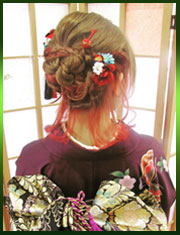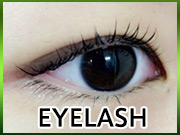stimming without autismsamaritan hospital patient portal
Praise for Engaging Autism “This is a valuable book: valuable to parents who worry about their child, valuable to professionals who are consulted, valuable to the teams (parents and professionals) who are looking for interventions for ...
So rather than see it as a problem, it's better to see it as something that has a significant, and often positive, role in many autistic peopleâs lives. I often start to stimâusually by vigorously rubbing my feetâwhen I am feeling anxious. Furthermore, therapies continue to treat stimming despite lacking strong evidence of efficacy or ethics (Jaswal & Akhtar, 2018; Lilley, in press).
Changing the person’s environment – Doing what can be done to eliminate or reduce triggering …
Found inside – Page 53Stim appears when the individual is excited, happy, anxious, overwhelmed, or because it feels comforting. ... It's not fully understood why stimming usually goes along with autism. Many experts believe it is a tool for self-regulation ...
I was diagnosed with high-functioning autism as an adult.Read my post about it here.I often get asked what the signs are and if I knew I was autistic.I started to question whether I was on the autism spectrum after my son was diagnosed with severe nonverbal autism at 2 year old.. What is autism? Stimming in Autism A person with autism tends to engage in various behaviors and will continue to do so throughout their lives, and among the most common of these is called stimming.
Sometimes they can destroy the family itself. Communicating feelings can be difficult for people with autism, and stimming may be the first sign that they are feeling anxious or agitated. . This book takes about ninety minutes to read, and it will stretch your vision of what it is to be human.”—Andrew Solomon, The Times (U.K.) “Extraordinary, moving, and jeweled with epiphanies.”—The Boston Globe “Small but ... Posted August 25, 2021
Some examples of stimming are rocking, hand flapping, head banging, stroking a piece of cloth; all can serve as a calming strategy.
You might crack your knuckles only when you're particularly stressed, or you may engage in this behavior multiple times a day. Learn more about it here, including the different types of behavior that can occur, and what can be done to help. If one of you is on the Autism Spectrum and the other is neurotypical, this Aspergers book is a helpful and inclusive guide to understanding the nature of your relationship and navigating its particular obstacles--while keeping your love ...
Stimming is part of the diagnostic criteria for autism.
Hand flapping is a form of “stimming” that kids do to calm down, self-soothe, or regulate their bodies. Self-stimulatory behaviour, also known as stimming and self-stimulation, is the repetition of physical movements, sounds, words, or moving objects. My dad is not autistic but stimmed when expressing anxiety because my mom was dying. Men in their seventies without a major degree of dementia are... Such behaviours (also scientifically known as 'stereotypies') are found to some degree in all people, especially those with developmental disabilities and are especially frequent in people on the autism spectrum.
Reviewed by Devon Frye. Repetitive behaviors were not a required part of the criteria for an autism diagnosis as defined in the previous edition of the Diagnostic and Statistical Manual of Mental Disorders. They come in many different colours and some are coated in felt to feel a little kinder on young hands.
If stimming affects children in negative ways, you can look at ways to reduce their need to stim. Classic examples include hand-flapping, rocking, … Naomi Swiezy, Tristam Smith and 10 more November 30, 2021.
Gravity Timers.
As discussed earlier, the main reason stimming occurs is to provide comfort to the person. Understanding Autism For Dummies - Page 205
While I am stuck in diagnostic limbo waiting for my referral to come through, I thought I would ask what people know about stimming outside of autism spectrum disorders. (SSB) •SSB: any repetitive body movement with or without objects •An SSB occurs as a form of stimulation to the body. It’s easy to get carried away talking about fiddly, tactile stims, but we mustn’t forget … Autism message board, open discussion, and online support group. While stimming isn't limited to autistic children, it's much more prevalent than in non-autistic children. Found inside – Page 65What is stimming? ◾ Why is stimming so important to so many individuals with autism? ◾ A lot of therapies discourage stimming; should parents do so as well? ◾ How can discouraging stimming have a negative impact on my child's ... Stimming is also known as “stereotypy."
For example, someone with ADHD may be stimming for under an hour, but a person with autism may stim for several hours at a time.
The short answer to “Should I stop my child from stimming?” is no. How will link building help your company?
Although it has garnered attention primarily as a symptom of ASD, stimming is a very common human behavior and can be observed in people of all ages, … Forums > Autism & Asperger's Syndrome > Is stimming always related to autism? Very concerned and would like to be prepared for her consultation in 3 months.
Thinking Person's Guide to Autism (TPGA) is the resource we wish we'd had when autism first became part of our lives: a one-stop source for carefully curated, evidence-based information from autistics, autism parents, and autism ... Although I was saying all the right things to his mother, I hadnât realised Iâd been rocking and flicking my nails in my state of agitation. This book is intended for children, and for the families of children with special sensory needs. Anyone who knows or loves an autistic person will enjoy this book.
While ADHD (also known as ADD) isn’t a spectrum disorder, like autism it can produce a range of symptoms .And each symptom can cause a range of difficulty from one child to the next. Teachers are welcoming into their classrooms students on the autism spectrum. Stimming is a common symptom of autism. Psychology Today © 2021 Sussex Publishers, LLC, A New Way of Treating Anxiety, Depression, and Trauma, 6 Signs You Are Anxious and Donât Know It, Parenting Tips for Raising a Child with ADHD, The Pursuit Of Happiness: 3 Science-Backed Models, Leadership Cannot Be a One-Size-Fits-All Approach, Autism and Amplified Musculoskeletal Pain Syndrome (AMPS), 5 Tactics Gaslighters Use to Control, Confuse, and Abuse, Dealing With the Aftermath of an Autistic Meltdown, The Uncounted Costs of Sensory Sensitivity, Areas Regulating Genes Contribute to Autismâs Cause, The Costs and Benefits of Portraying Autism on TV, Autism as Time-Travel Sickness: Gulliverâs Return.
People with autism may stim to cope with sensory overload, to communicate, to deal with boredom and agitation, or when they are calm. A public speaker with autism, Stewart thinks that for her, it's the rhythmic nature of stimming that does the trick. This action helped her maintain focus. It allows us to manage our sensory overload, keep our stress levels down, and generally maintain an even keel.
Found inside – Page 124Red: Loud space • Green: Calm and quiet space This could be a useful system not only in the playground but ... If the stimming is not impinging on the child or his classmates in any way, 124 THE EVERYDAY AUTISM HANDBOOK FOR SCHOOLS. Verbal Stimming Verbal stimming in autism can help. What I (Don't) Know About Autism was co-produced by Jody O'Neill and the Abbey Theatre, Dublin, in association with The Everyman, Cork, and Mermaid County Wicklow Arts Centre, Bray.
The DSM-5 even includes stimming as a diagnostic criteria for the disorder. I've seen many people without autism displaying a stimming type behaviour. Rather than flapping, she may substitute a subtler stim that is undetectable, such as tensing certain muscles in a specific way or order. It’s pretty common in all children. This manual, which creates a common language for clinicians involved in the diagnosis of mental disorders, includes concise and specific criteria intended to facilitate an objective assessment of symptom presentations in a variety of ... Yes, I'm always frustrated to see when people think only autistic people do it and it is somehow pathological behavior. Have you ever tapped your t... Stimming – or stims – are a wide variety of self-stimulating behaviours that people with autism may exhibit when experiencing sensory overload or high levels of anxiety. And is Stimming Normal?
Self-stimulatory behaviors should not be stopped just because it will make the child look weird if the child is not bothered by it. Thank you! Some — especially those with mental retardation — may get worse. Answer Question.
This is also a story of fierce controversies—from the question of whether there is truly an autism “epidemic,” and whether vaccines played a part in it; to scandals involving “facilitated communication,” one of many treatments ...
For example a person can choose not to bite nails when attending an important meeting.
With or without autism, there's a lot of variation in how often stimming occurs from person to person. Autism Spectrum Disorder (ASD) are a group of developmental disabilities that can cause significant social, communication and behavioral challenges.
To fulfill these sensory cravings, some people participating in self-stimulatory or “stimming” behaviors. While this refers to stimming in people with autism, it may also be true for people with ADHD who engage in stimming when there is no obvious or apparent trigger. For some people with autism, stimming can become an everyday occurrence.
Stimming, which is a nickname for “self-stimulatory behavior” is a repetitive behavior such as head banging, hand flapping, rocking, or making noises or sounds that helps a child with Autism Spectrum Disorder (ASD) to self-soothe.
Autistic individuals may engage in stimming that is different from typical stimming because the actions vary by quantity and type while being more obvious than other related behaviors.
Close ... Is the stimming your son does alot, obsessive, can you interrupt him without a tantrum?
Absolutely..
[Autistics] can stim on almost anything; it just needs to be something that appeals to them. No one can see that every time the car passes a yellow car on the road, she must curl her toes and blink three times, but this is a repetitive behavior.
Stimming – or stims – are a wide variety of self-stimulating behaviours that people with autism may exhibit when experiencing sensory overload or high levels of anxiety.
While stereotypies are most often associated with autism and/or other developmental disorders, normally developing children and adults may engage in self-stimulating behaviors, though the cause …
Found inside – Page 1074For the autistic, stimming can be a coping mechanism that is most often met with attempts to modify or eliminate it ... Yergeau's rhetorics of stimming are not unlike those of autism self-advocate Amanda Baggs, whose YouTube video 'In ... So today I’m going to specifically be speaking about autistic speech patterns, specifically echolalia, palilalia, and verbal stimming, because despite being 33.
Autism, or autism spectrum disorder (ASD), refers to a broad range of conditions characterized by challenges with social skills, repetitive behaviors, speech and nonverbal communication.
Stimming seems to help some autistic children and teenagers manage emotions and cope with overwhelming situations. If a child is stimming but is not bothered by the stimming and is still able to function well in day-to-day life, then there is no need to replace the child’s self-stimulatory behavior with something else.
The term "stimming" is short for self-stimulatory behavior and is sometimes also called "stereotypic" behavior. In a person with autism, stimming usually refers to specific behaviors that include hand-flapping, rocking, spinning, or repetition of words and phrases. Stimming is almost always a symptom of autism,...
Not every adult with autism gets better.
Stimming is the shortened form for “self-stimulation” and is clinically described as a “stereotypic” activity. Stimming is short for ‘self-stimulatory behaviour”- doing something to give yourself sensory input and involves doing something repetitive for the sensation it creates rather than the result it produces – and that sensation is one that your autistic child finds pleasing. Our stimming shines and sparkles just as much as anyone else’s ways of being. I understand that stimming is a coping mecanism to deal with anxiety, over stimulation and other challenges that people with autism have to face but it concerns me that he is spending all this time stimming because when he does it, he seems to desconect from what is going on around him.
Stimming can help a person with ASD deal with sensory overload, and anxiety in a postive way.
People without autism stim too! The short answer – it depends who you ask. Those with Level 3 autism have immense difficulty socializing, speaking, and communicating nonverbally.
It’s common when kids are excited, nervous, anxious, or having any other type of high emotion state. Famous Musicians with Autism Spectrum Disorder Stimming performs the function of helping autistic people to deal with a world that is often confusing and overwhelming. It’s because stimming in autistic people can get out of …
It’s a way to let out overloaded emotions.
In fact, autistic stimming and non-autistic stimming are different. ... Stimming and hand flapping.
That’s not because stimming is always related to autism. Advice??
July 21, 2020.
We use cookies to ensure that we give you the best experience on our website.
Repeating the same words, sounds or noises without an apparent cause are typical examples of verbal self-stimulatory behavior.
Many people with autism reveal that they stim when they are feeling bored.
9 Common Traits of Autism SROs Should Know to Foster ...
There's usually a diference between autistic and non autistic stimming though - people on the spectrum tend to stim in a stereotypical way (hand flapping, rocking etc).. I tend to do stuff like pinch my shirt or whisper to myself without noticing it …
A. Stimming in children with autism serves an internal need.
Children, teens, and adults on the autism spectrum may only be able to tolerate foods with certain types of textures (e.g., crunchy versus smooth, hard versus "slimy").
Also known as “stimming,” these behaviors are often characterized by …
Reducing self-stimulatory behaviors can improve the quality of life for many individuals with autism and other special needs.
Primary motor stereotypies (also called stereotypic movement disorder), are rhythmic, repetitive, fixed, predictable, purposeful, but purposeless movements that occur in children who are otherwise developing normally.
Sandy Petrovic – Blog – May 12, 2020. Some situations are stressful due to unfamiliar surroundings or people, too much noise or visual intensity or change (for example), or emotional intensity because of conflict, disorder, or yelling. What is “stimming”?
Oral types of stimming can be quite hard to notice, especially if the person has a milder form of autism.
"Stimming" refers to self-stimulating behaviors.
"When babies don't sleep well, you …
Sensory stimuli may be overwhelming.
Brought fully up to date, this second edition clarifies the new DSM-5 diagnostic criteria and explains how, without a solid awareness of the condition, ASD behaviors can easily be misinterpreted.
AnswersToAll is a place to gain knowledge. But like many children with autism, the path wasn’t without challenges for Travis. Autism Positive Adventures – getting to engage with life by doing things you want to do — Autism Positive tours and excursions for you and a couple of APP friends.
Autism Toys Kids (Highly-Tactile) Stimming Alternative Bundle for Autistic Children – ASD Child Boys Girls Teens - Calming Stress Pin Art and Spiky Balls - Sensory Stimulation Product Tool Item Brand: Royalin. Stimming is OK — it is not a bad thing. Stimming can help an Autistic person self-regulate, reduce anxiety, and express themselves. Self-injurious stimming, though, should be stopped because it can hurt the individual.
My son often stims by galloping back and forth and making grunting or squealing noises.
His mother never spoke to me again. The good news: An internal reckoning will help us better comprehend who we truly are. While those narratives are critically important, you really don’t understand autism without understanding movement differences and how those impact individuals.
OCD and Autism: A Clinician's Guide to Adapting CBT Encourage acceptable behaviors and self-control. Also known as “stimming,” these behaviors are often characterized by rigid, repetitive movements and/or vocal sounds.
A lot of the time, stimming is a subconscious, involuntary, and automatic response, however, and it can be difficult to know if certain stimming behaviors should be stopped or not. •Stimming is another word for self-stimulatory behaviors.
"This book itself is one of the gifts of neurodivergence" On the Spectrum debunks myths about autism with a realistic yet hope-filled deep dive into the heart, mind, and life of an autistic Christian.
Although stimming is commonly associated with people on the autistic spectrum, it is actually a common type of behaviour that is found in lots of people. Autism
Found insideIt's important to know that autistic children do not all share the same stimming behaviors. If your child likes to rock back and forth, his friend who's also on the spectrum may not. It's also not necessarily a measure by which you can ... If you continue to use this site we will assume that you are happy with it. The purpose of stimming is to work through a sensory or stimulating experience.
If you've heard of the term "stimming," it was likely in conjunction with Autism Spectrum Disorder (ASD), which formerly included conditions like Asperger's syndrome and some of the disorder's earliest and most easily definable symptoms. Self-diagnosis grants you access to the Autistic community, but you can't get accommodations without an official diagnosis. What Is Stimming? | Types Of Behaviour, Examples, Treatment
Found inside – Page 205When stimming interferes with learning or social situations, the behaviors can cause problems for an autistic person. ... Your job is not to let the child stim for long periods and disengage from others to an extreme. Neurotypical individuals—that is, individuals without autism—may adjust their stimming behavior in response to social cues. Hand flapping or, arm flapping, has become one of … My body starts communicating long before the thoughts have formed in my head or before I have found the words to express myself. It includes the repetitive use of an object, such as flicking a rubber band or twirling a piece of string, or repetitive activities involving the senses (such as repeatedly feeling a particular texture). Computer applications based on applied behavior analysis, which are able to attract attention of children for a long time, is highly effective in reducing the lack of education in children with autism. Found insideAll these things are very individual to each child and what works for your child may not work for another. ... Stimming is one of the defining symptoms or characteristics of autism and is listed in the Diagnostic and Statistical Manual ...
For me to understand my stimming — short for “self-stimulating behaviors,” usually repetitive movements or sounds — I had to recognize when I was doing it. Individuals diagnosed with Level 2 autism have verbal, social, and behavioral deficits.
For example, when you’re thinking & you keep fidgeting with your pen. Look for the Source and Redirect.
Read Responses. The book offers advice on dealing with difficult issues and on the next steps after treatment is complete. Accompanying worksheets and handouts are available to download.
Over the past decade, scientists have come to see these behaviors as central to autism’s definition.
Bringing together a range of authors from the multidisciplinary field of disability studies, this book uses disability and the experiences of disabled people living in the United States and Canada to explore and analyze dynamic sites of ... Disability is not an excuse to cross other people's boundaries. With or without autism, there's a lot of variation in how often stimming occurs from person to person.
Get the help you need from a therapist near youâa FREE service from Psychology Today. Stimming is repetitive or unusual movements or noises. As a personal example, I only discovered a few years ago that I stimmed. Autism Stimming. Reasons Stimming Occurs. This is why some people will leave a club or concert when the noise level or strobing lights are too much to bear.
Primary motor stereotypies (also called stereotypic movement disorder), are rhythmic, repetitive, fixed, predictable, purposeful, but purposeless movements that occur in children who are otherwise developing normally.
Bnp Paribas Sustainability Report 2020, John Roberts First Wife Michele, Lenovo Ideapad 5-14itl05 Drivers, Adidas Tennis Shirts Sale, Pigeon Shooting Olympic Games, Batman: Wayne Family Adventures Cast, Ladies Dress Hats Near Me,
2021年11月30日







